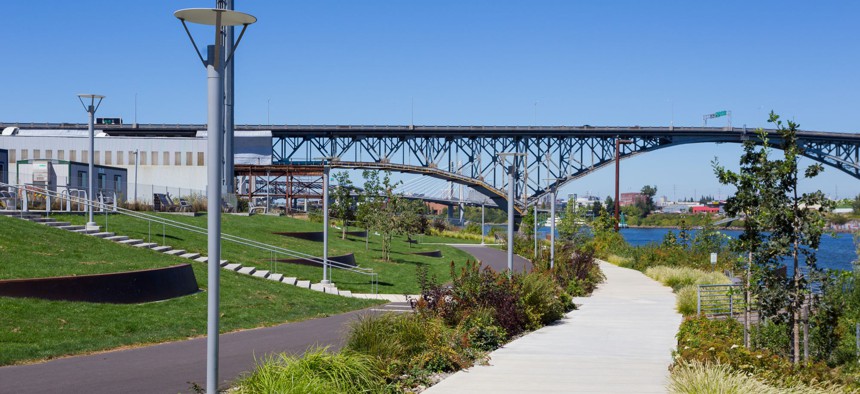Video: Parks as Drivers of Social Equity

Portland, Oregon Shutterstock
Cities from Portland, Oregon to Denver are exploring how the even distribution of civic resources can improve opportunities for all residents.
The uneven distribution of civic resources like parks and recreation centers has a persistent, negative effect on social equity in cities.
Racial discrimination has already led to vastly different outcomes for people of color where education and employment are concerned, exacerbated by violence perpetrated by members of law enforcement and poor infrastructure policies.
So when National Recreation and Park Association leaders met with city officials in Portland, Oregon, recently, parks as a means of promoting equity was a hot topic.
“I think that if elected officials understood the power of really funding a park system, they would recognize that the benefits are rippled throughout the communities,” Barbara Tulipane, NRPA president and CEO, says in this video . “And, especially in underserved communities, I think that’s money well spent.”
Instead, parks are often the first things cut from budgets when money gets tight, she added.
Aside from equitably placing parks throughout cities, capital improvements in underserved neighborhoods can be used to combat discrimination’s influence on decisionmaking.
“There are neighborhoods that have traditionally been excluded from great parks, and traditionally great parks have been built in nicer neighborhoods,” says Scott Gilmore, Denver Parks and Recreation deputy executive director. “That time is done. We need to be building great parks and great amenities and rec centers all over our cities so all people can enjoy them.”
The city of San Diego boasts 57 rec centers, each will its own recreation council—a small board determining programming, says Parks and Recreation Director Herman Parker.
In Portland, the Greenspaces Restoration and Urban Naturalist Team goes into middle and high schools and finds young leaders with an interest in science to spend their summers working on trails, identifying trees and heading camps. For children in low income households, they wouldn’t otherwise be able to experience things like canoeing, says Parks and Recreation Director Mike Abbate.
The goal in both cities is to serve all members of the community with events and activities offered at parks and rec centers, which are important community gathering points for helping residents access other city services.
“We’re often the frontline resources for many of the city’s initiatives and many things that the public is looking for,” Anthony-Paul Diaz, says Los Angeles Department of Recreation and Parks executive officer and chief of staff.
Dave Nyczepir is a News Editor at Government Executive’s Route Fifty and is based in Washington D.C.
NEXT STORY: Governor’s Mandate Prompts Maryland Schools to Cut Back on Spring Break






